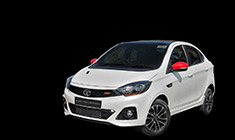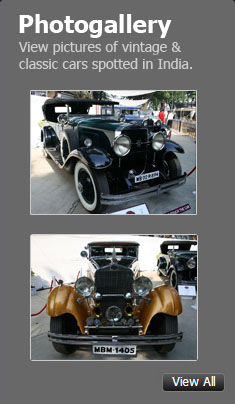News
MG Windsor EV : Our Observations after a day of driving
You’ll not appreciate the traffic, but you will appreciate how easy the Windsor EV is to drive in the traffic.
Driving the MG Windsor EV
Powering the MG Windsor EV is a permanent magnet synchronous motor that makes 134 BHP and 200 Nm. It comes with a 38 kWh battery pack and the claimed range is 331 km (as per MIDC test procedure Part 1 + Part 2):

The way EVs drive in general has become quite predictable. Once you get to know the specifications of the car, there is a rough idea as to how it will drive. Apart from certain aspects, the way the Windsor EV drives on the road is very much predictable. It’s an EV that has been developed as a point A to point B commuter and not an outright performer. Hence, the way it delivers power is very linear and the focus is on smooth driving. There are 4 drive modes to choose from – Eco+, Eco, Normal and Sport. All the drive modes have distinct characteristics and you also have 3 levels of regeneration as per the need.
Walk up to the car with the key in your pocket and you’ll be glad that the flush-fitting door handles open automatically (unlike on the Tata Curvv EV where it’s manual). That’s a very good welcome feature. Open the door and you just have to press the brake pedal, select the ‘D’ transmission mode with the left stalk behind the steering wheel and you’re ‘Ready’ to drive. No need to push a start button or turn the key. Lift your foot off the brake pedal and the car rolls off smoothly. The crawl speed is comfortable and with the auto hold function, driving in bumper-to-bumper traffic isn’t cumbersome. You’ll not appreciate the traffic, but you will appreciate how easy the Windsor EV is to drive in the traffic. Driving with a gentle foot, the car can keep up with city traffic easily and even make quick overtakes. The Eco+ mode is where the top speed is restricted to 80 km/h and this is where the throttle response is in the dullest setting. However, if you’re a sedate driver, you’ll like driving in this mode when in the city. There’s enough power to get along. You can switch to Eco mode or Normal mode if you want to go quicker.
Out on the highway, the Windsor EV reaches triple-digit speeds without breaking a sweat. MG hasn’t shared the 0-100 km/h acceleration time, but it’s likely to be under 10 seconds. When it comes to power delivery, the progress till 100 km/h is strong. Post that you can feel the power taper off. Just like most EVs, this has been done to conserve the battery as the motor spins at high revs, When it comes to overtaking on the highways, you won’t be stuck behind anyone. The acceleration from 80 km/h to 100 km/h is strong. Even 120 km/h comes up pretty quickly. You don’t even have to switch to Sport mode for overtakes. Normal mode is good enough for overtakes on the highway.
There are 4 driving modes as mentioned earlier:
Eco+ mode – This is the most energy-efficient driving mode. The top speed is limited to 80 km/h and the accelerator is in its dullest setting. You can feel the sluggishness in acceleration. It’s best to use this setting in heavy traffic or bumper-to-bumper situations.
Eco mode – You can use this mode for long-distance cruising on the highway. You can go above 80 km/h and still be efficient. There’s a noticeable difference between Eco+ and Eco mode. The car doesn’t feel as sluggish and you can make some quick overtakes in this mode as well.
Normal mode – We didn’t find a major difference between the Eco mode and Normal mode. There’s a difference in outright acceleration. However, while driving around normally, you or your passengers will most likely not even know the difference between the Eco and Normal mode.
Sports mode – This is the mode to engage when you want to have some fun. You will for sure leave the ICE cars behind in outright acceleration. The throttle response is sharper and the car feels quick on its feet in this mode. However, thanks to the linear calibration of the pedal, driving in Sport mode isn’t jerky. You can drive smoothly in city traffic while in Sport mode, just that you will run out of juice faster.
All in all, the Windsor EV provides a good balance of economical driving and smoothness along with some performance as well. The power delivery is very linear and so is the accelerator response which makes driving the car a smooth affair.
Regenerative Braking
The MG Windsor has 3 levels of regeneration – Light, Medium and Heavy. Unfortunately, there’s no physical button anywhere on the dashboard to quickly select the regeneration mode. You have to select the regeneration via the touchscreen. By default, the car is in Heavy regeneration mode. I found this mode to be manageable. It isn’t very jerky and the deceleration doesn’t catch you off guard. People who like engine braking will love being in this mode. You can also do one-pedal driving in many situations. However, do keep in mind that the car will not come to a complete halt. It will keep crawling forward without any throttle input. The Medium and Light regeneration modes are also comfortable, although you will end up using the brake pedal more often.
Noise, Vibration & Harshness (NVH)
EVs are generally quite silent and the Windsor isn’t any different. Since there’s no engine noise or transmission noise, the cabin is silent when driving around in the city. You do hear a bit of the ambient noise though. Out on the highway, wind noise starts creeping in post 90 km/h and there is a fair bit of tyre noise at 100 km/h.
Range
MG has claimed a range of 331 kilometres as per MIDC test procedure Part 1 + Part 2. We won’t go into too much detail, but just to give you a basic idea, MIDC stands for Modified Indian Driving Cycle. The test is conducted on a dynamometer and the Part 1 test is where they keep running a cycle of ~1 km with varying speeds. The average speed during the Part 1 test is 19 km/h. The Part 2 test cycle is roughly 6.6 km long where the average speed is 60 km/h and the maximum speed reached is 90 km/h. In our driving time with the Windsor EV, we couldn’t do a range test, but judging from the range drop, a realistic range of 250 km seems doable. We’ll have to wait for ownership reviews to get the real-world range figure.
That being said, MG should've brought in the bigger battery pack variant as an option. It's already available on the international variants and the extra range would've been appreciated by some of the buyers.
Charging
The Windsor EV gets a 38 kWh LFP battery pack with prismatic cells. The charging port is of the CCS 2 type and the charging time for 0-100% on a 3.3 kW AC home charger is 13.8 hours. The same with a 7.4 kW charger is reduced to 6.5 hours. With DC fast charging on a 50 kW charger, the battery charges from 0-80% in 55 minutes. The Windsor EV doesn’t get vehicle-to-vehicle charging (V2V) or vehicle-to-load charging.
Suspension

Ride Comfort
The Windsor EV has a McPherson strut suspension at the front and twist beam suspension at the rear. Suspension setups with EVs are a bit tricky to get. The weight distribution needs to be considered and the engineers also have to be careful that they don’t make the ride too stiff. Right off the bat, the Windsor EV’s suspension setup is comfortable and most owners who will be driving it only in the city from point A to point B won’t find any issues with it. Start looking closely and in certain situations, some of the weaknesses start to show. Over a bad patch of road, there is noticeable movement inside the cabin. While it’s not very uncomfortable at the front, the movement at the back is considerably more. The rear passengers will feel the bad roads and side-to-side movement a lot more than the front passengers. The twist beam suspension at the rear is a big contributor to this side-to-side movement. In isolation, the suspension does well to absorb small to medium-sized potholes. You also feel a bit of the road and its irregularities due to the 18-inch wheels and the recommended tyre pressure – 36 PSI, which is rather high. If your driving is primarily in the city, you will want to reduce the tyre pressure to 32-33 PSI for a slightly cushier ride.
Handling & Dynamics
The straight-line stability of the Windsor is good and you won’t notice that you’re doing triple-digit speeds. Just like at slow speeds, the ride at the rear isn’t as comfortable as the front at higher speeds. You will feel vertical movement over highway undulations and expansion joints more at the rear. This is a bit contradictory to the Windsor’s focus on providing ultimate comfort for rear-seat passengers.
The Windsor has a long wheelbase and also wide front and rear tracks. So, when you think about it, the overall contact patch is big which aids in the dynamics of the car. The tall height of the car is a limiting factor though. Start pushing the car and around corners, it manages to hold its line quite well. In high-speed corners, you can carry a good amount of speed and on the highways, the car manages quick lane changes without much fuss. In tight corners, the turn in is sharp and you can place the car nicely on the exit. The tyres do squeal under stress, but the Windsor doesn’t lose its composure. There is body roll present and the absence of side bolstering on the seats makes you feel it even more.
Steering
The electric power steering unit in the Windsor EV is light in the city and very user-friendly as well. You can easily manoeuvre the car around in the city. At high speeds, the steering weighs up nicely. One issue that you might notice is that the steering is very direct. This is usually a good thing, but here, there is no dead space in the centre. Hence, while on the highway, the slightest undulation turns the steering wheel and the car starts moving in that direction. This meant that one has to always correct the steering to go straight. This can get irritating on long-distance trips. Also, there’s not much feedback from the steering in the corners when pushing hard. Overall though, it’s a decent setup and serves the purpose of most drivers.
Braking
All variants of the Windsor EV are equipped with disc brakes on all four wheels. They provide excellent stopping power and manage to stop the car effectively. Panic brake situations were handled well by the car.
Continue reading the discussion on the MG Windsor EV on our forum.






















